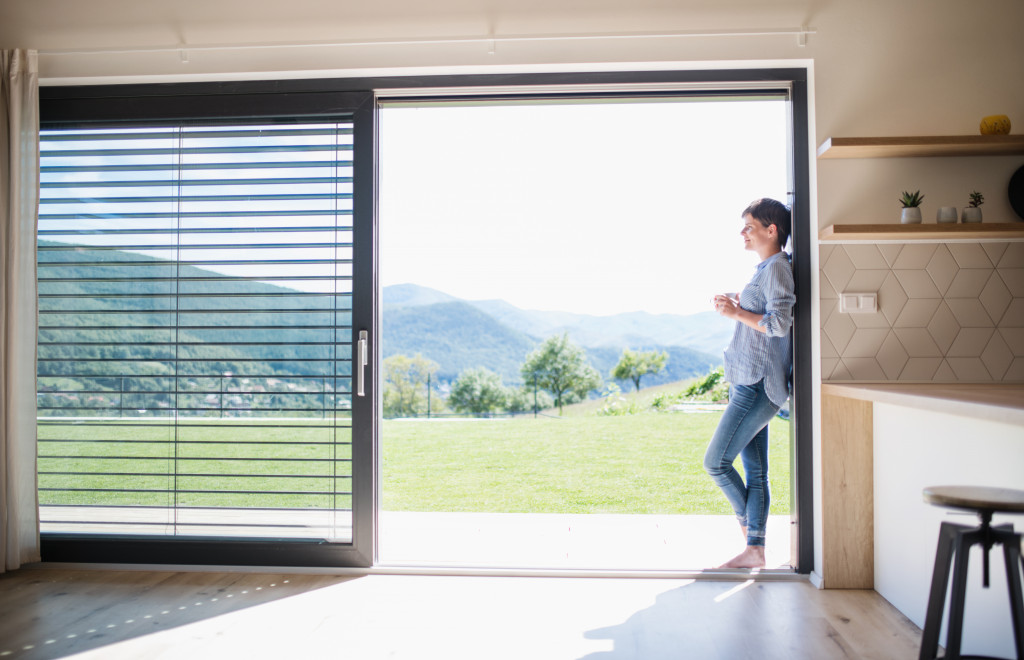- Determine your budget and prioritize renovations according to importance.
- Plan out the layout of your tiny home based on your lifestyle needs.
- Utilize creative storage solutions that maximize space and style.
- Go green by selecting energy-efficient appliances and eco-friendly building materials.
- Consider professional help to ensure that renovations are completed properly and safely.
As people approach retirement age, more and more are looking towards tiny homes as an alternative. These homes offer an affordable yet sustainable way of living without compromising on comfort. However, renovating a tiny fixer-upper home can be daunting. Here are some tips and options for renovating one.
Determine Your Budget
Before embarking on the renovation process, it is crucial to determine your budget. Tiny homes may seem like a cheaper option than a traditional home, but the cost can quickly add up.
Make sure you have a clear understanding of how much money you are willing to spend, and stick to it. Create a list of things that you need to renovate, prioritize them by importance, and allocate a budget to each.
If possible, try to leave a little extra in the budget for unexpected costs. It is better to be prepared than find yourself in a financial bind during the renovation process.

Plan Your Layout
Space is at a premium in tiny homes, so planning your layout is critical. Before starting the renovations, consider the lifestyle you want to have in your tiny house. Do you need a dedicated workspace or storage for outdoor equipment? Do you want a comfortable seating area for guests? Once you have a clear understanding of your needs, you can plan a layout that maximizes the limited space and accommodates your lifestyle. Here are some things you can do:
Get Creative with Storage
Storage can be a real challenge in tiny homes, but it is possible to get creative and maximize your space. Consider built-in storage solutions such as under-stairs, drawers, wall-mounted shelves, and hidden cabinets.
Use multi-purpose furniture such as a sofa bed that doubles as a guest bed or a coffee table with storage inside. With some creativity, you can find great storage solutions that don’t compromise style.
Choose Durable Materials
When renovating a tiny home, it is crucial to choose materials that can stand up to wear and tear. Consider using natural materials such as bamboo or cork flooring as they are both lightweight and durable.
Use hardwood or laminate for counters, cabinets, and walls, as they are easy to clean and long-lasting. Whatever materials you choose, make sure that they are of good quality and can withstand the test of time.
Use Sliding Doors
Sliding doors are a great way to make the most of limited space. These can be used for closets, bedrooms, bathrooms, and even living rooms. Sliding doors open up floor space which is especially beneficial in tiny homes.
Choose sliding glass doors for better visibility and natural light, or opt for solid wood for a more traditional look. Whichever option you choose, sliding doors are a great way to maximize your space.

Go Green
Tiny homes are inherently energy-efficient, but there are several things you can do during your renovation to make it even more sustainable. Choose energy-saving appliances and lighting, install solar panels or a rainwater harvesting system, and use eco-friendly building materials.
These steps not only reduce your carbon footprint but also lower your energy bills in the long run. You can also choose to use recycled materials, such as reclaimed wood, for your furniture and cabinets.
Furthermore, make sure that your insulation is up to date and use low-VOC paints to reduce indoor air pollution. This will help to create a healthier, more comfortable living environment for you and your family.
Consider Professional Help
Renovating a tiny fixer-upper home can be a daunting task, and it may be worth considering professional help. Professionals can help you plan a layout, source materials, and oversee the renovation process. While it may cost more upfront, professional service can ultimately save you time, money, and stress. Here are some experts to partner with:
Architects
Architects are invaluable when it comes to renovating a tiny fixer-upper home. They can help you plan out the layout of your home, provide expertise on materials, and ensure that all renovations adhere to local building codes. Furthermore, architects can give insight into integrating green features such as renewable energy systems or water-saving fixtures into your home.
Roofers
A trusted roofing company can provide invaluable assistance when it comes to renovating a tiny home. They can inspect your roof, identify any repairs that need to be made, and recommend the best materials for long-term protection against weather damage. A professional roofer will also have extensive experience in waterproofing systems, ventilation solutions, and fireproofing methods.
Interior Designers
Interior designers are experts at creating spaces that look great and maximize the use of available space. They can help you choose furniture, fabrics, and accessories to create a cohesive design that enhances the aesthetics of your home. Moreover, interior designers can also provide advice on lighting solutions to make the most of natural light and low-energy options.
Renovating a tiny fixer-upper home may seem like a daunting task, but with careful planning and a bit of creativity, it can be a fulfilling and rewarding project. By determining your budget, planning your layout, going green, getting creative with storage, and considering professional help, you can create a cozy and sustainable living space that suits your needs. Remember, a tiny home is not just a living space; it’s a lifestyle choice that brings simplicity, sustainability, and joy into your life.
